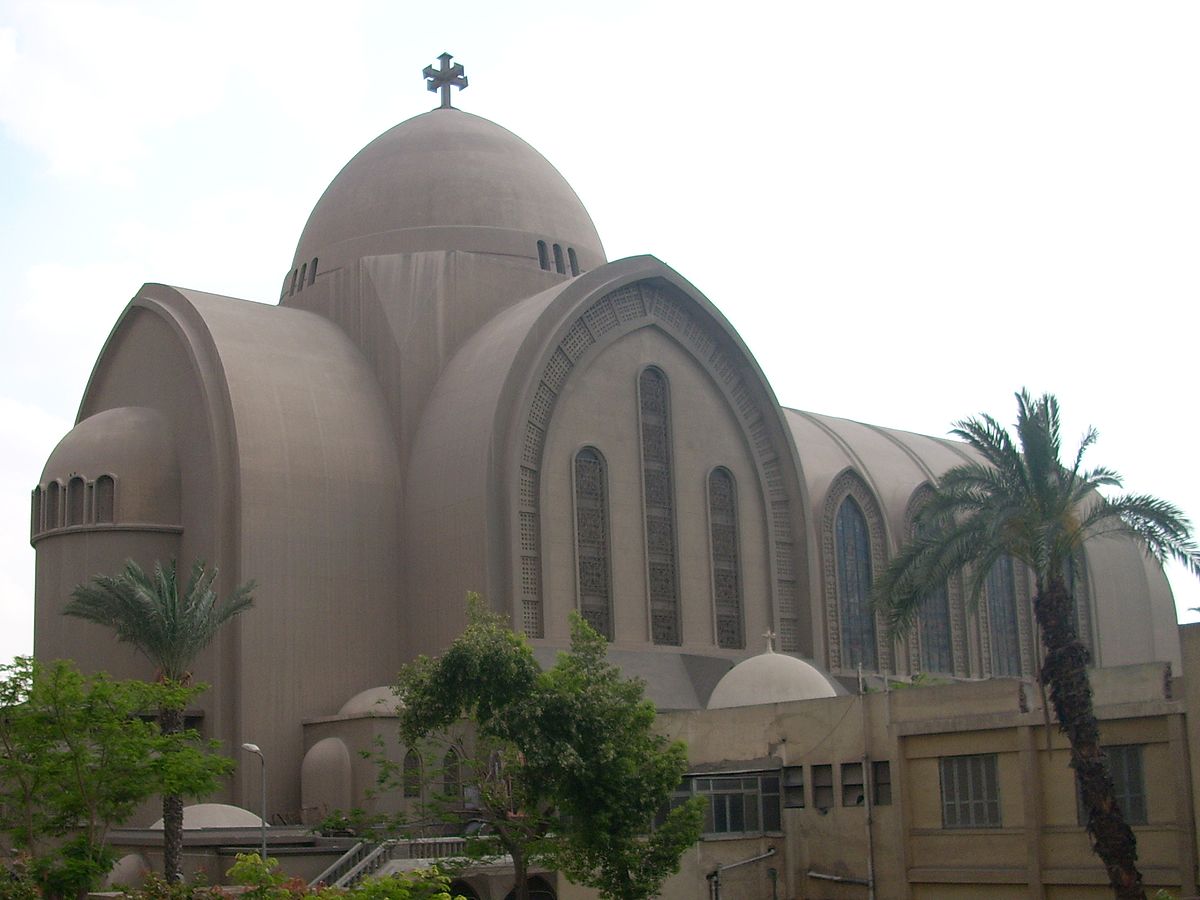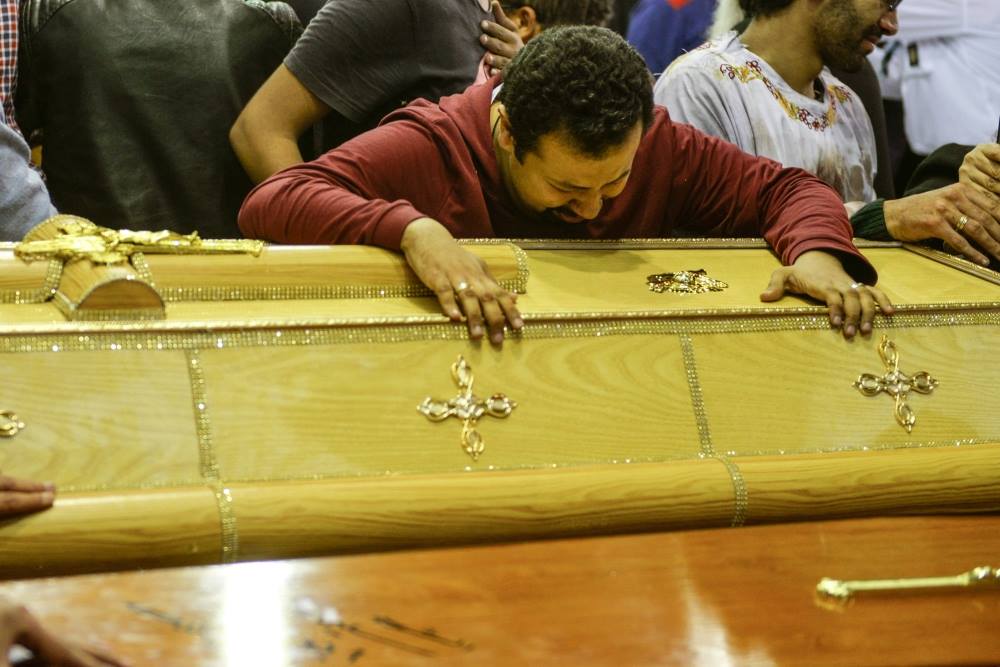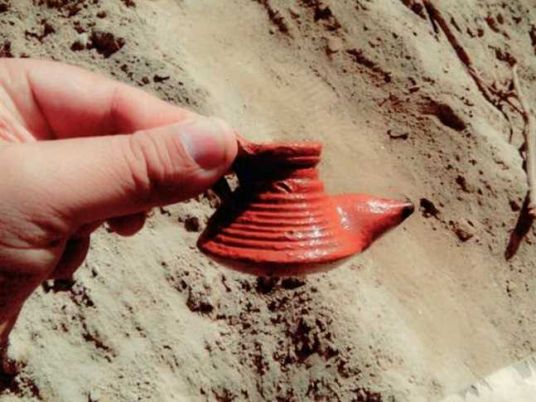
Clad in a galabeya and clutching a foldable mat, Luqman Bazlan boards a tram from Chatby toward Raml Station in downtown Alexandria. In his four years studying medicine at Alexandria University, the Malaysian national has never observed Ramadan in Egypt until this evening.
“The taraweeh is not mandatory, but they are Sunnah [official Islamic practice] during Ramadan,” Bazlan explains as the tram pulls up in front of al-Qaed Ibrahim Mosque, and passengers descend and rush to line up at an adjacent street.
“Back home, we usually pray at home,” he adds.
Built in the heart of Alexandria in 1948, al-Qaed Ibrahim Mosque was designed by Italian architect Mario Rossi, indicating the city’s cosmopolitan spirit. It’s named after Ibrahim Pasha, the son of ruler Mohamed Ali’s who’s often credited for building modern Egypt. More than a half-century later, the mosque became an assembly point for protests that shook the rule of Egypt’s first republic on 25 January.
From the first night of Ramadan and on every night throughout the month of fasting, Muslims across the world join in praying the taraweeh, also called Qiyaam al-Layl, or standing prayers — a set of voluntary prayers recited after the final night prayers. And in the coastal city of Alexandria, the devotion is a very public affair.
Rows of the devout stand side by side in front of al-Qaed Ibrahim Mosque on sidewalks and the street, in a long, domino-like formation that extends several blocks to the Bibliotheca Alexandrina. And as in the interior of a mosque, temporary walls cordon off a section of the street reserved as a prayer space for women.
Bazlan sneaks into a vacant space between two men and rolls out his mat in front of the mosque. At about 9 pm, speakers amplify the euphonic, meditative recitations of Sheikh Hatem Farid, the imam of al-Qaed Ibrahim, as he leads the public taraweeh.
Towered by edifices dating back to Alexandria’s cosmopolitan past and only meters away from the Mediterranean’s shores, the site is a locus of the city’s layered history and eclectic culture.
“It is here where the demonstrations in Alex began during the 2011 revolution. The people came out of the mosque after Friday prayers and joined the people’s protests,” says Bazlan.
And during Ramadan, the historic setting transforms into a practical place of pilgrimage, where an Islamic rite has become an annual spectacle that adds to the city’s diverse appeal.
The sight of throngs of believers engaged in a ritual of prayer evokes a momentary reverence and affords a glimpse of a community of Alexandrians temporarily redefining urban space. The gathering easily resembles the mass of pilgrims who visit Mecca every year for Ramadan.
Watching a video feed from the Kaaba in Mecca, in which the imam is reciting the taraweeh to millions of worshippers present, Hammam Ahmed — who spent most of his childhood in Mecca — feels nostalgic.
“I miss the feeling of being there with millions of others doing the same thing and saying the same words. There’s an affirmation from being part of something great,” he says. “It’s like going into a stadium and seeing everyone cheering for the same team.”
Literally, taraweeh is the plural form of the Arabic word for “rest,” and it signifies the brief moment of rest before a raka, or a cycle of postures during prayer — standing, bowing, prostrating and sitting.
Since the taraweeh is not obligatory, the number of raka one performs has been disputed but is ultimately subjective. Some pray 12 or 20 raka, while others pray only eight, and the length of the prayer varies on the Sura, or chapter of the Quran recited.
“Taraweeh is taken after Prophet Mohamed, peace and blessing upon him, who was known to pray the night prayers at home in and out of Ramadan. While in the standing position, we pray the juz’ [one of 30 parts of the Quran],” says Mohamed Abdel Samad, a regular congregant at al-Qaed Ibrahim, speaking on the imam’s behalf.
It is believed that in the seventh century, the second khalifa, Omar ibn al-Khattab, had encouraged the taraweeh to be prayed in mosques during Ramadan. Ideally, over the 30 nights of Ramadan, all 30 parts of the Quran would be recited.
“But the length of taraweeh and the number of raka’at are flexible and depend on your ability,” Abdel Samad says.
Whether eight, 12 or 20, the nightly prayers of taraweeh can be seen as a supplement to the daily obligatory prayers, and serve a popular custom in Alexandria. To accommodate the large turnouts at various mosques in the city, sheikhs have started to implement two shifts of taraweeh prayers. One is conducted right after night prayers, and a second one is conducted after a 20-minute break and lasts until midnight.
For many Egyptian Muslims, the taraweeh forms an important Ramadan tradition, while some see it as an opportunity to score religious points. According to a hadith, Prophet Mohamed held that the best deed was to offer prayer.
“And good deeds during Ramadan are doubled in reward,” says Abdel Samad.
This piece was originally published in Egypt Independent’s weekly print edition.




